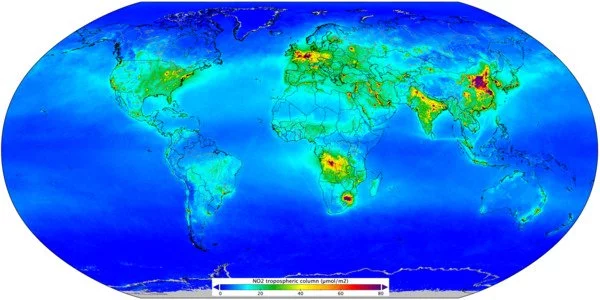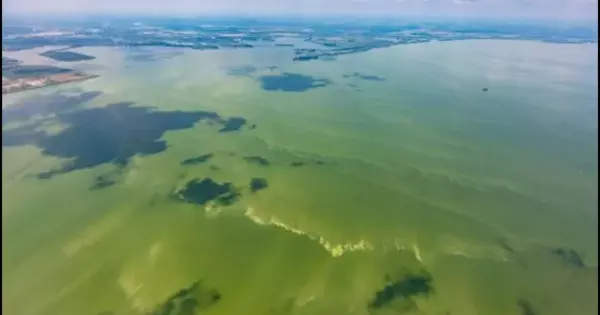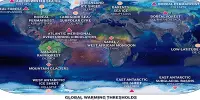Tropical coastal ecosystems are among the most biodiverse areas on the planet. They are also on the front lines of the consequences of human activity. That is why, as human populations grow, it is becoming increasingly important to manage the impacts of runoff and wastewater that flow into the sea.
“Tropical coastal ecosystems, such as coral reefs, are oligotrophic, which means they are located in nutrient-poor waters and have thus adapted to these conditions,” said Madeline Berger, a researcher at UC Santa Barbara’s National Center for Ecological Analysis & Synthesis (NCEAS). “An increased influx of nutrients can thus disrupt ecosystem functioning.”
Berger and her colleagues address the issue of nutrient pollution in coastal Central America in a paper published in the journal Ocean and Coastal Management. As a result, Agricultural operations are responsible for the vast majority of nitrogen pollution that enters the Mesoamerican Reef Region. The researchers believe that knowing where the pollution is coming from will help managers tailor mitigation solutions.
“Our research shows that different management strategies will need to be implemented in different watersheds to help reduce nutrient input that can have a negative impact on coral reef and seagrass health in this area,” Berger said.
The Mesoamerican Reef is the largest barrier reef in the western hemisphere, second only to Australia’s Great Barrier Reef in terms of size. It stretches for nearly 700 miles and is shared by Mexico, Belize, Guatemala, and Honduras. It is home to a variety of creatures, including hundreds of fish species, critically endangered marine turtles, mollusks, marine mammals, and shorebirds. These habitats and communities, in turn, support local fishing and tourism. On their Caribbean vacations, millions of people flock to resorts and ports in Cancun, Cozumel, Belize City, and other locations along the coast.
Our research shows that different management strategies will need to be implemented in different watersheds to help reduce nutrient input that can have a negative impact on coral reef and seagrass health in this area.
Madeline Berger
But the reef is also in trouble. More than half of it is in poor condition due to a variety of threats such as ocean warming, unsustainable fishing, and pollution.
“Nutrient pollution is a known threat to coral reef and seagrass,” Berger said. Too much nitrogen, a common pollutant, results in a chain of events that results in oxygen-free “dead zones,” and acidic conditions that can severely weaken or kill fish and other animals. Water quality issues are also among the main reasons for sindromé blanco, a pathogenic disease that leads to white lesions that spread over coral, leading to death in mere weeks. Nutrient pollution in this region, according to the researchers, “comes from four sources: agricultural production, human wastewater, atmospheric deposition, and wild animal scat,” with agriculture and human wastewater suspected of contributing the majority of the pollution.
The researchers used several models to examine the watersheds that feed into the MAR to determine how much of the pollution came from upstream agriculture or human wastewater. One was a global wastewater model that was adapted to this specific region and estimated the amount of nitrogen pollution based on population maps, protein consumption, and known human nitrogen excretion rates.

“Because another group at NCEAS was developing a spatially explicit global model quantifying the ecological footprint of food production, we saw an opportunity to synthesize both models to compare nutrient pollution from wastewater to nutrient pollution from crop and livestock production,” Berger explained.
The researchers also modelled impacts from the millions of tourists that roam up and down the coast using hotel location data, cruise ship location data and monthly statistics reported by tourism bureaus in each country. “Basically, we were trying to figure out where tourists were pooping, which turns out to be pretty tricky,” she said.
Agriculture was found to be by far the largest contributor of nitrogen to the MAR (92%) due to fertilizer and livestock waste runoff that makes its way to the ocean via rivers and streams. The Rio Ulua in Honduras and the Rio Motagua in Guatemala were responsible for more than half of the modeled nitrogen pollution, collecting runoff from several upstream tributaries and draining into the ocean. Meanwhile, 90% of the modeled nitrogen pollution was attributed to 20 watersheds (out of 430), 11 of which are in Guatemala or Honduras. Nitrogen pollution from watershed plumes was estimated to have affected 80% of coral reefs and 68% of seagrass beds.
The findings demonstrate the complexities of the pollution problem; even land use changes and agricultural expansion far inland can have an impact on marine ecosystems, according to Berger. Furthermore, the researchers discovered that high biodiversity habitats were more vulnerable to plumes emanating from smaller, coastal watersheds. And, while tourism accounted for a very small proportion of total pollution, the watersheds that contributed the most pollution also had a high number of tourists or were located near those that did.
“The exercise also raised questions about how tourists, or tourist demand, has larger impacts than just the physical presence of more people, such as increased building or expanding agriculture, which can also exacerbate pollution input,” Berger said. The researchers hope that a granular approach to tracking the origins and paths of nitrogen and other nutrient runoff, as well as their impacts, will eventually allow coastal managers to develop the sophisticated action plans required to mitigate pollution in some of the world’s most biodiverse coastal regions.
















